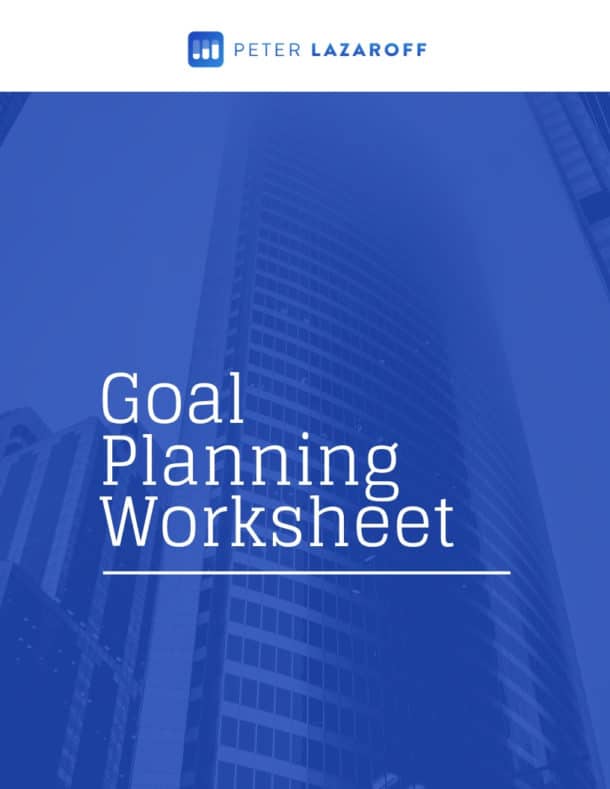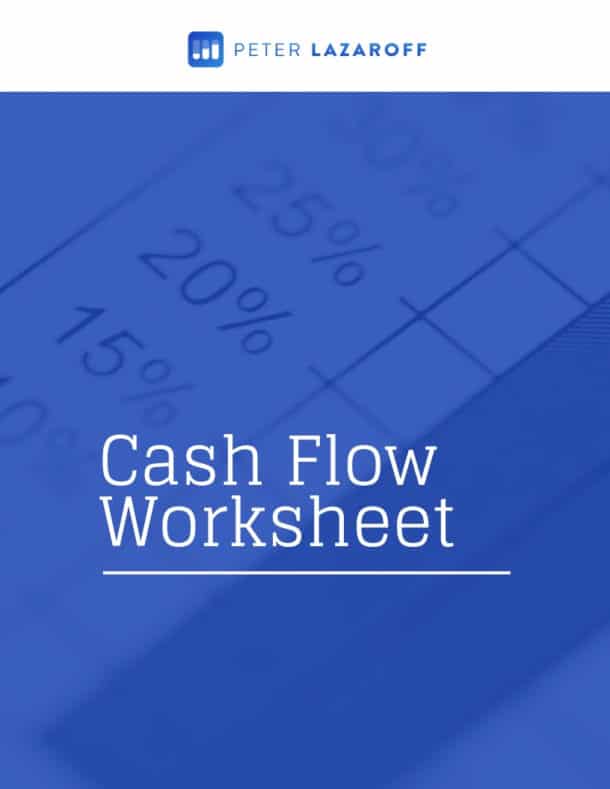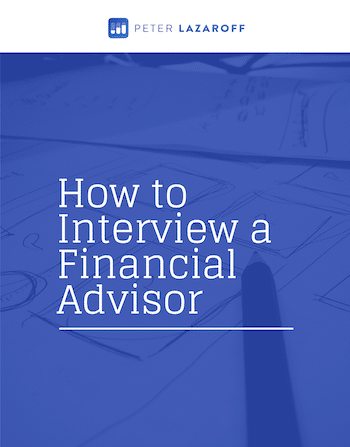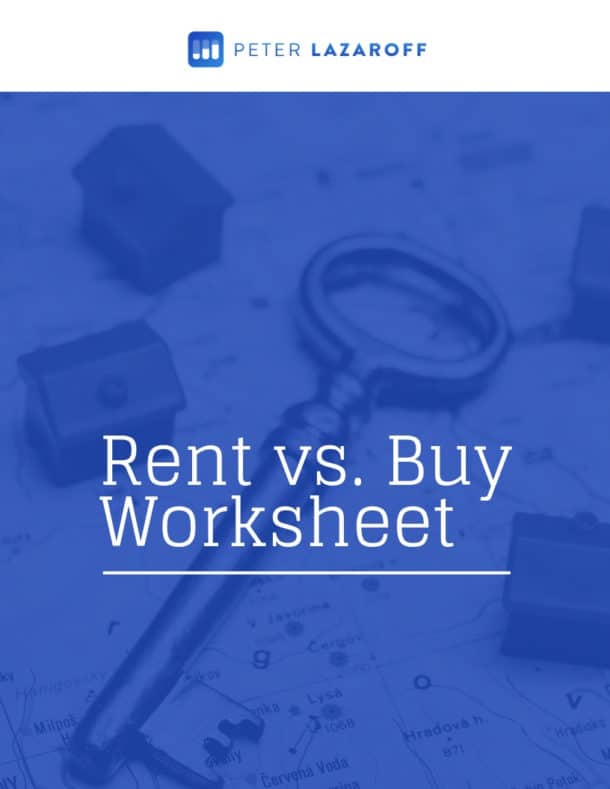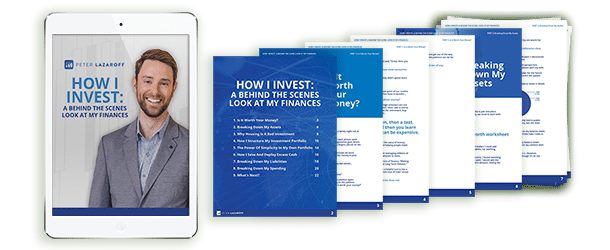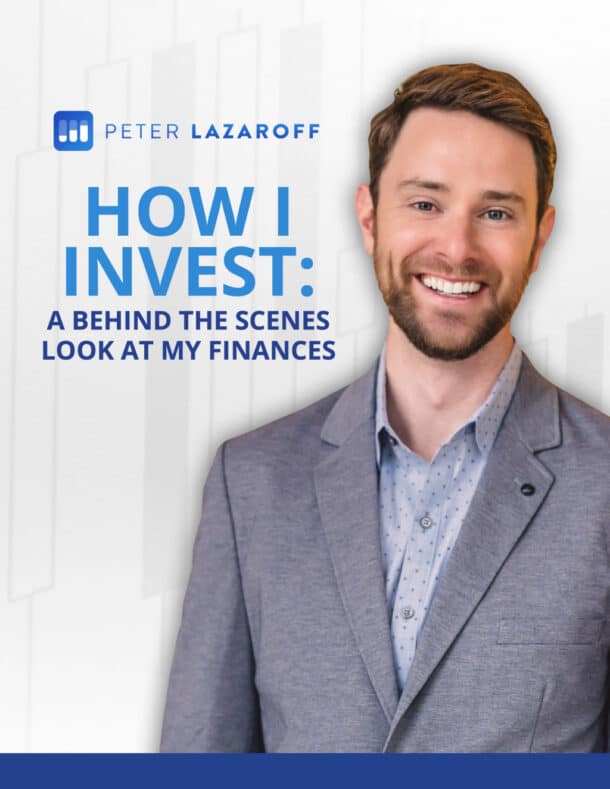Is the 60/40 portfolio dead?
Both stock and bond markets are down this year, which has led to the traditional framework of the 60/40 portfolio being called into question across a variety of media outlets.
Listen now and learn:
- 5 reasons the 60/40 portfolio is not dead
- The historical performance of past 60/40 portfolio declines
- How the 60/40 portfolio framework is undergoing its biggest change ever
Listen Now
Show Notes
Is the 60/40 portfolio dead?
Both stock and bond markets are down this year, which has led to the traditional framework of the 60/40 portfolio being called into question across a variety of media outlets.
The 60/40 portfolio is shorthand for a portfolio allocated to 60% stocks and 40% bonds. The simplest implementation of that strategy would be owning the S&P 500 and U.S. Treasuries. And that’s typically the breakdown of assets being used in headlines these days.
In this episode, I’m going to share five reasons why I don’t think the 60/40 Portfolio is dead. BUT at the conclusion of the episode, I’m going to share my thoughts on how the 60/40 Portfolio framework has changed forever.
Let’s dive in…
The 60/40 Portfolio Isn’t Dead Just Because It Had a Down Year
There aren’t many years in which stock and bonds are down, in large part because bonds rarely have calendar years with negative returns.
Going back to the inception date for the Bloomberg Barclays U.S. Aggregate Bond Index, there have only been three down calendar years for the overall bond market. Using 10-Year Treasuries, which has data going back to 1926, there are only five calendar years in which bonds lost money.
But in 2022, Bloomberg Barclays U.S. Aggregate Bond Index is set to record the worst 1-year performance in history. In fact, the performance is so bad that by the end of the third quarter, the Aggregate Bond Index recorded its first-ever negative five-year return.
Now, we all know that stock market declines are far more common and something I would characterize as a normal part of investing. But most of the time, when stock returns are negative, bond returns are positive.
So in a year where the S&P 500 is in a bear market, one of the worst bond markets in history is obviously making a bad situation worse for the 60/40 portfolio.
But even though it’s obvious, I’m going to say it anyways: 2022 is only one year, and making any judgments based on a single year is short-sighted. Zoom out a little and one could argue that the 60/40 portfolio needed a breather of some sort.
Since the Financial Crisis, a 60/40 portfolio of S&P 500 and the Bloomberg Barclays U.S. Aggregate Bond Index has averaged an annual return of 11.5%, well above the historical average. Even after adjusting for inflation, the 9.1% annual real return stands above long-term levels of around 6%.
Nothing goes up in a straight line. One bad year doesn’t negate more than a decade of historically high performance.
The 60/40 Has Done Worse Before
Despite an equity bear market and the worst year in history for most bond indices, the year-to-date experience for the 60/40 portfolio remains outside the five worst historical drawdowns.
In a recent piece from Dimensional Fund Advisors, they rank the worst historical losses of a 60/40 using 5-Year U.S. Treasuries as the bond portion of the 60/40 portfolio because it allows us to go back further in history. I’ll include a link to the piece in the show notes as well as the chart of these downturns, which I think is a very visually compelling way to see that things aren’t catastrophic – today’s drawdown is only about two-thirds of that experienced during the Financial Crisis, for example.
The 60/40 Does Well After Declines of 10% or More
Still, it’s not fun seeing the 60/40 portfolio with such large losses. But there is plenty of evidence that ought to provide you with some confidence for the future.
Check out the chart from J.P. Morgan below.
Reading directly from J.P. Morgan’s commentary:
“Since 1980, there have been nine instances in which the 60/40 fell more than 10% within a given year. Yet, investors who were patient with their portfolios were often rewarded with a rebound. In five of those years, returns still ended the year positive. In eight of the nine instances, returns the following calendar year were positive, with an average return of over 17%.”
The same Dimensional piece I referenced earlier also makes a case for optimism. The average returns in the 12 months after such a decline was 7.9%. In the three years following a 10% decline or more, the average cumulative return was 17.4%. And over the next five years following a 10% decline, the 60/40 portfolio had an average return of 37.1%.
Portfolio Construction is Less About What’s Working Now and More About What Has Always Worked
Since 1980, the average intra-year decline for a 60/40 portfolio has been -7.7%, but annual calendar year returns have been positive in 35 of 42 years.
There isn’t an investment strategy that works 100% of the time. But over the long-run, financial theory tends to hold up pretty well. Talking about what’s working right this moment is a distraction from the business of investing successfully over the long term.
Yes, this bad period happened, but a good investment plan is built on the assumption that these bad periods will happen with a similar magnitude and frequency as they have in the past. If you are always chasing what’s done best recently, you’re likely to be buying high and selling low.
And, as I mentioned before, returns have historically been favorable following periods of poor performance. With lower valuations and higher yields than we had at the beginning of 2022, the outlook for the returns is better today than before.
Maintaining a strategic, long-term asset allocation – whether that’s 60% stocks or some other target amount – has held up well over long periods of time. Portfolio decisions ought to be made with a multi-decade time horizon in mind.
There’s More to 60/40 Than Two Asset Classes
While the 60/40 portfolio allocated between U.S. large-cap stocks and investment-grade bonds has historically generated returns that could likely satisfy a lot of investors’ needs, the reality is that most investors have exposure to more than just those two asset classes.
Although International and Emerging Markets are actually weighing down returns further, these particular Small and Mid-cap U.S. stocks are beating Large-cap stocks.
And for the bond portion of the portfolio, perhaps you don’t own the Bloomberg Barclays U.S. Aggregate Bond Index. I personally believe the case for indexing in equities is much stronger than the case for indexing in bonds.
Bond index funds give the greatest weighting in the portfolio to the most indebted entities, which generally makes me opposed to using bond index funds outside of a few very specific use cases.
I don’t want to go too far down a rabbit hole here, but the point I’m trying to make with the 60/40 portfolio is that most investors don’t just own the agg or Treasuries.
There are also a wide range of investable non-traditional asset classes and vehicles that investors can utilize to meet their specific needs, which brings me to the final thought that I teased at the beginning…
The 60/40 As We Know It Is Dead
I said earlier that the 60/40 portfolio is shorthand for a portfolio allocated to 60% stocks and 40% bonds. I do think this traditional definition is, in fact, dead.
As I just mentioned, there is more to a diversified portfolio than large-cap stocks and investment-grade bonds. If the 60/40 portfolio is meant to be shorthand for a globally diversified index allocation between a strategic, long-term mix of stocks and bonds – then sure, that’s an easy definition to wrap my head around from a portfolio construction conversation or benchmarking perspective.
But the days of there being a one-size-fits-all portfolio are dead.
Regardless of what percentages of stocks, bonds, or non-traditional asset classes you own – today we are living in an age of customization. Both technology and product development have ushered in an unprecedented amount of choice for investors and advisors alike.
While I still believe that a simple index portfolio is sufficient for many investors, the primary case for indexing is low costs and the costs of customization have plummeted.
Want to tilt your portfolio towards higher expected returns? Or perhaps you want to exclude companies that don’t align with your values or tilt your portfolio towards companies that do well on Environmental, Social, and Governance issues?
No problem. In both instances, you can build a portfolio that more closely aligns your investments with your objectives and risk tolerance.
And while these types of product developments have allowed for a great deal of precise customization, technology enhancements and economies of scale are allowing asset managers to offer separately managed accounts (SMAs) to pursue direct indexing at extremely competitive costs. And once you get to this level of customization, the options can become even more granular from investor to investor.
In short, the idea of the traditional 60/40 as a default investment option for most investors is gone. But still, the idea of long-term, strategic asset allocation seems unlikely to ever go out of style.
Resources
- The 60/40 Portfolio is Down but not Out by Dimensional Fund Advisors
- Is the 60/40 Dead commentary from J.P. Morgan
Submit Your Question For the Podcast
Do you have a financial or investing question you want answered? Submit your question through the “Ask Me Anything” form at the bottom of my podcast page.
If you enjoy the show, you can subscribe wherever you listen to podcasts, and please leave me a review. I read every single one and appreciate you taking the time to let me know what you think.
About the Podcast

Long-term investing made simple. Most people enter the markets without understanding how to grow their wealth over the long term or clearly hit their financial goals. The Long Term Investor shows you how to proactively minimize taxes, hedge against rising inflation, and ride the waves of volatility with confidence.
Hosted by the advisor, Chief Investment Officer of Plancorp, and author of “Making Money Simple,” Peter Lazaroff shares practical advice on how to make smart investment decisions your future self with thank you for. A go-to source for top media outlets like CNBC, the Wall Street Journal, and CNN Money, Peter unpacks the clear, strategic, and calculated approach he uses to decisively manage over 5.5 billion in investments for clients at Plancorp.
Support the Show
Thank you for being a listener to The Long Term Investor Podcast. If you’d like to help spread the word and help other listeners find the show, please click here to leave a review.
Free Financial Assessment
Do you want to make smart decisions with your money? Discover your biggest opportunities in just a few questions with my Financial Wellness Assessment.










